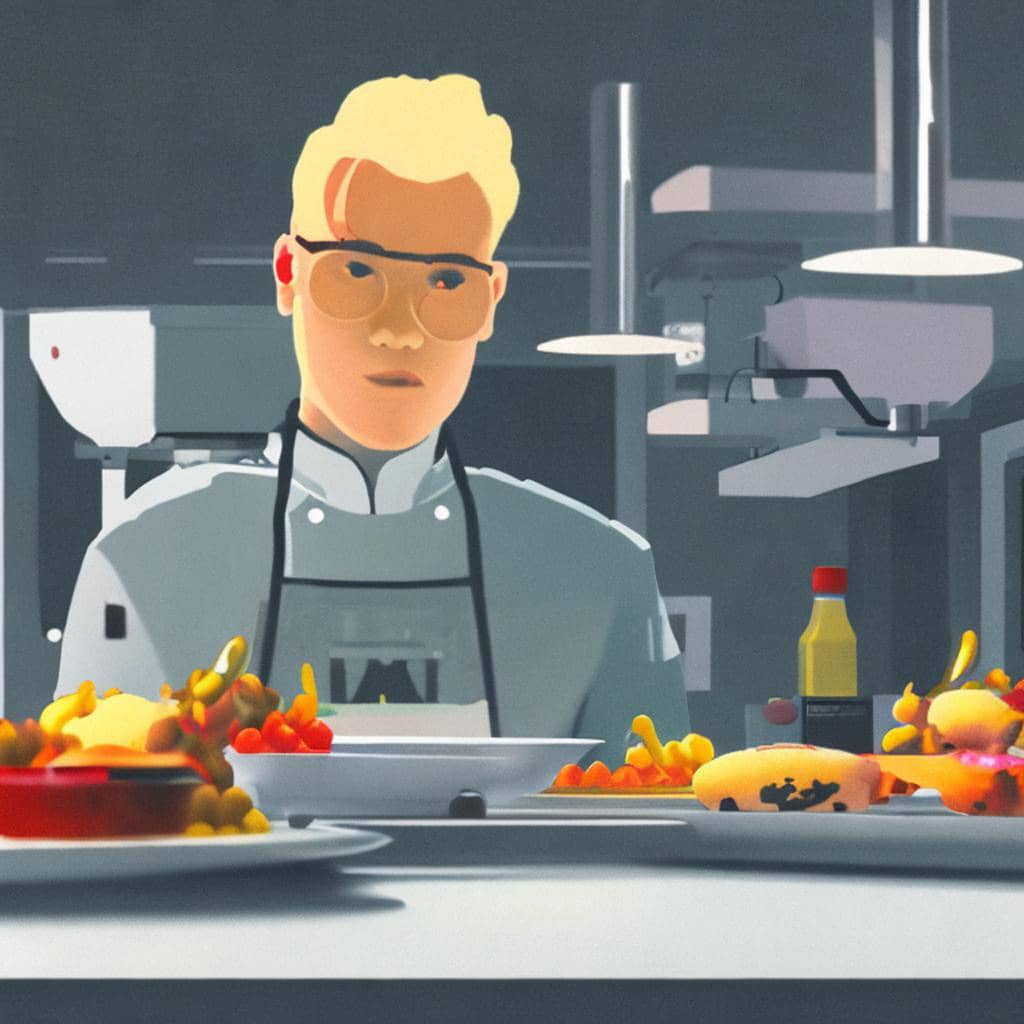AI and Top Cuisine: How Artificial Intelligence Can Enhance Culinary Creativity
Artificial intelligence (AI) is revolutionizing many industries, and the culinary world is no exception. In top cuisine, chefs are constantly seeking to push the boundaries of flavor, texture, and presentation, and AI is proving to be a valuable tool in their quest for culinary innovation.
One way that AI is being used to create new and innovative dishes in top cuisine is through the use of machine learning algorithms. These algorithms can analyze vast amounts of data on ingredients, flavor profiles, and cooking techniques to identify patterns and relationships that would be difficult for humans to discern. By analyzing this data, AI can suggest new combinations of ingredients and flavors that chefs might not have considered before.
For example, an AI algorithm might analyze data on the chemical compounds that give certain ingredients their unique flavors and aromas. By identifying which compounds are present in different ingredients, the algorithm can suggest new combinations that are likely to produce novel and exciting flavors. Additionally, AI can help chefs to discover new flavor combinations by analyzing data on consumer preferences and trends, such as which flavors are currently popular in different regions or cultures.
Another way that AI is being used to enhance culinary creativity in top cuisine is through the use of generative algorithms. These algorithms can be trained on large datasets of recipes and ingredient combinations to generate new recipes and dishes that are both creative and delicious. By generating a vast number of potential recipes, AI can help chefs to explore new culinary directions and discover unexpected flavor combinations.
For example, an AI algorithm might generate a recipe for a dessert that combines ingredients in a way that would be difficult for a human chef to conceive. The resulting dish might feature unexpected flavor combinations, such as the combination of sweet and savory ingredients or the use of unusual herbs and spices. By exploring these new directions, chefs can continue to push the boundaries of what is possible in top cuisine.
Finally, AI can also be used to enhance the sensory experience of food in top cuisine. By analyzing data on the chemical compounds that give ingredients their unique aromas and flavors, AI can help chefs to create dishes that are more complex and nuanced in their flavor profiles. Additionally, AI can be used to optimize the texture and mouthfeel of dishes, creating a more satisfying and enjoyable dining experience.
AI is proving to be a valuable tool in the quest for culinary innovation in top cuisine. By analyzing vast amounts of data and generating new and unexpected recipes, AI can help chefs to explore new culinary directions and push the boundaries of flavor, texture, and presentation. As AI continues to develop and evolve, it is likely that we will see even more exciting developments in the world of top cuisine.
That means a top cook stirrs the algorithm
While AI can generate new recipe ideas and flavor combinations, it is ultimately up to the top chef to refine and execute those ideas in a way that creates a delicious and visually appealing dish. AI is not a replacement for human creativity and expertise, but rather a tool that can enhance and augment it.
In fact, many top chefs are already working with AI to help them develop new recipes and techniques. By using AI to analyze data on ingredient combinations, flavor profiles, and cooking techniques, chefs can gain new insights and inspiration for their culinary creations. They can then take these ideas and adapt them to their own cooking style, refining and adjusting them until they achieve the perfect balance of flavor, texture, and presentation.
Ultimately, the best culinary creations come from a combination of creativity, expertise, and a willingness to experiment and take risks. AI can help to provide inspiration and new ideas, but it is the top chef who brings those ideas to life and turns them into delicious and memorable dishes.
Table Summary of the ways AI can be used to create new and innovative dishes in top cuisine
| AI Application | Description |
| Machine learning | Analyzes data on ingredients, flavor profiles, and cooking techniques to identify patterns and suggest new combinations of ingredients and flavors that chefs might not have considered before. |
| Generative algorithms | Trained on large datasets of recipes and ingredient combinations to generate new recipes and dishes that are both creative and delicious, helping chefs to explore new culinary directions and discover unexpected flavor combinations. |
| Sensory optimization | Analyzes data on the chemical compounds that give ingredients their unique aromas and flavors to create dishes that are more complex and nuanced in their flavor profiles. Additionally, AI can optimize the texture and mouthfeel of dishes, creating a more satisfying and enjoyable dining experience. |
In top cuisine, AI is proving to be a valuable tool for enhancing culinary creativity by generating new recipe ideas, suggesting unexpected ingredient combinations, and optimizing the sensory experience of food. By leveraging machine learning algorithms, generative algorithms, and sensory optimization, chefs can explore new culinary directions, push the boundaries of flavor and presentation, and create new and innovative dishes that delight and surprise diners.

Thank you for questions, shares and comments!
Share your thoughts or questions in the comments below!
Text with help of openAI’s ChatGPT Laguage Models & Fleeky – Images with help of Picsart & MIB





